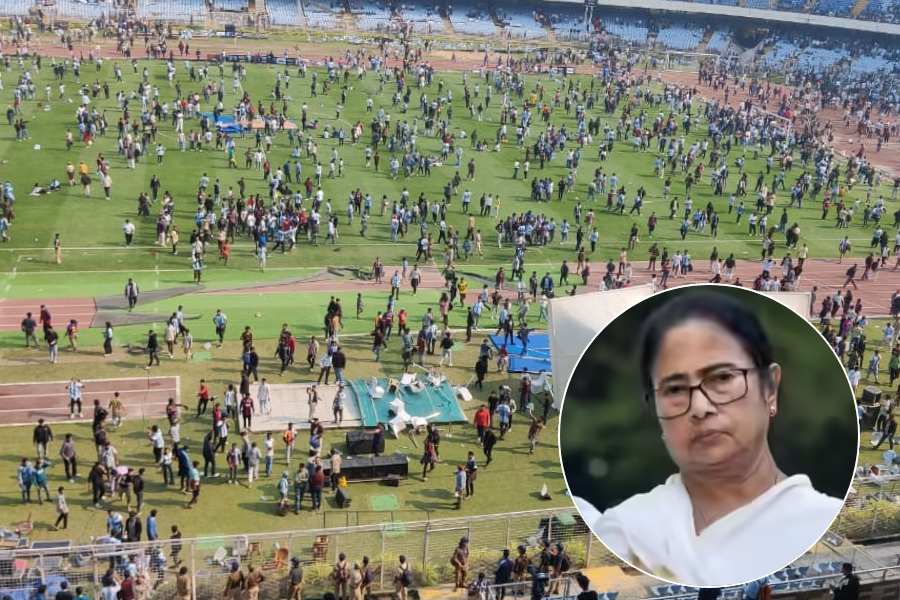 |
| Mount Everest (AFP) |
Cambridge, July 20: A campaign by some influential Indians to rename Mount Everest after Radhanath Sikdar, the Bengali mathematician whose calculations established that Himalayan “peak number XV” was the highest in the world, was today given short shrift by the leading British historian on the subject.
Mount Everest, which was named after British explorer George Everest, is not even in India, it was pointed out by historian John Keay, author of The Great Arc.
Today in Cambridge, the Festival of the Great Arc was launched to celebrate the 200th anniversary of the British mapping of India, “one of the greatest human endeavours ever undertaken”.
“I feel slightly responsible for the festival,” said Keay, who is supporting the ambitious festival of Indian science, theatre, dance, music and film that will tour Britain this year.
The Great Arc is the name given to the Great Trigonometrical Survey, which for the first time mapped and measured the entire Indian subcontinent, the most advanced contemporary technical survey to have been done in the pre-computer age.
The work was started 200 years ago by Col William Lambton, the surveyor-general of India, and carried on by his successor, George Everest, both of whom died in office. In 1852, after Andrew Scott Waugh had taken over as surveyor-general, Indian mathematician Radhanath Sickdhar (as the British then spelt his name) calculated that Peak XV in the Himalayas was 29,002 ft, taller than anything in the Andes.
Sikdar was only 20 at the time and recognised even then as a maths genius. There is now a body of opinion that Mount Everest should be renamed Mount Sikdar.
Even Prime Minister Atal Bihari Vajpayee appears to be in favour of this campaign. In a speech earlier this year to salute Sir Edmund Hillary and Sherpa Tenzing Norgay on the 50th anniversary of their ascent on Everest, Vajpayee went out of his way to emphasise that Sikdar was the first person to “identify” Everest.
The producer of the Great Arc Festival, Sanjoy Roy, said today that he personally wanted to avoid political controversy. But he added: “I would not say that Sikdar ‘discovered’ Everest but he was the one who did all the calculations. He was the ‘computer’ in the days before there were computers. His role was crucial.”
In Calcutta, Sikdar’s name has found its way into Sunil Gangopadhyay’s novel, Shei Shomoi, and there is a Sikdar Bagan Street named after his family.
In Keay’s book, The Great Arc, there is handsome acknowledgement of Sikdar, “the first Indian of rank in the employ of the Great Trigonometrical Survey and its undoubted mathematical star”.
The book adds: “It is quite probable that Sikdar’s computations provided the first clear proof of (peak) XV’s superiority.”
But “the popular account of the Bengali rushing into Waugh’s office in Dehra Dun exclaiming that he had ‘discovered the world’s highest mountain’ is obviously rubbish”.
Nevertheless, at a Great Arc function at India House earlier this month, deputy high commissioner Satyabrata Pal focused on Sikdar’s maths.
But a name change is unlikely, according to Keay. This is partly because the world has got used to the name Everest and partly because the Chinese and the Nepalese have a stronger territorial and “ethical” claim.
“If they were to get together and rename Everest, the West would have to accept it,” Keay told The Telegraph.
Although it was Waugh who decided to name the world’s highest mountain after his predecessor, he was wrong on a crucial point. In 1910, a Swede, Sven Hedin, said Mount Everest had original Tibetan names unknown to Waugh.
One was Chamolungma and a longer alternative, Mi-Ghik-Gu-Ghik-Bya-Phur-Long-Nga. Keay commented: “This means, ‘You cannot see the summit from near it but can see the summit from nine directions and a bird which flies as high as the summit goes blind’. Hardly trips off the tongue.”










